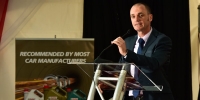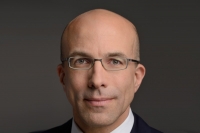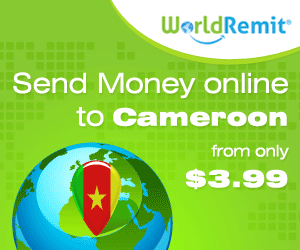Israel: Netanya attracts thousands of visitors each year
2015/08/02

Netanya is a lively seacoast town situated on the Sharon coastal plain, and a center for tourism that attracts thousands of visitors each year. The lovely beaches that extend along its entire length, its numerous vacation facilities, and hotels have made it a popular tourist resort. Exploring Netanya, one can hear a variety of languages spoken in the streets by tourists from all over the world.
Netanya was originally a moshava – a small agricultural village with citrus groves and a flourishing tourist trade. Since the 1930s it has as well become a center for the diamond cutting industry, which provide work for a lot of of its residents.
Today Netanya is a bustling resort city. It has dozens of hotels and guesthouses, charming coffee shops, restaurants offering a variety of tastes and styles, fashion boutiques, shopping centers, galleries, and entertainment spots. Festivals and other events are held in Netanya throughout the year, making the city become a lively gathering place.
The city center has a food bazaar that is known for its colorful stalls and exotic aromas. There is as well an authentic market open each week in the industrial area where you can find clothing, shoes, jewelry, and other wares.
The finest feature of Netanya is its beautiful beaches that extend for 12 kilometers along the city's seacoast. The bathing beaches have sports and vacation facilities for all family, and they are filled with bathers and vacationers throughout the summer. Above the beach is a ridge of rugged cliffs - the only ones of their kind in Israel - with a long promenade overlooking the sea. The promenade constitutes part of the "Israel Road" - a marked walking path that extends all length of the country from Kibbutz Dan in the north to Eilat in the south.
Netanya has a distinguished place in local history. There are several interesting sites such as the Um Khaled Khan that dates back to the Mamluke period. In the nearby park there is a sycamore tree that is 1,000 years old. The Pninat Shabtai Museum features an exhibition of Yemenite folklore, and the Diamond Center Museum has an exhibition of diamonds and a miniature model of a diamond mine.
Nature lovers can stroll through the southern section of the city where there are several large nature reserves, inclunding the Irises Reserve, where there is a large concentration of rare purple irises that flower in February and March, the Nahal Poleg Nature Reserve that contains fauna that is incomparable to the area, and the Udim Reserve where there is a pool with turtles, fish, and water birds.
- Related Articles

Israel’s achievements, on its 68th birthday
2016/05/17 As Israel’s 68th Independence Day approaches, we can look back at our achievements with pride, and look forward to our next with cautious optimism. The Israeli economy has grown 180 % over the completed 20 years, while our people has increased by only 45%.Israeli leadership is increasingly leaving it to Israelis to defend themselves as the wave of violence penetrates the Tel Aviv "bubble."
2016/01/10 The timing couldn’t have been worse. Just one day before the deadly attack on the Tel Aviv bar Jan. 1, The New York Times published a glowing account of how people could spend 36 exciting hours in the city. The piece described an open and secular city, where the LGBT community “seems to take precedence over Israel’s complicated politics.” Part the advantages described in the article were 300 days of sunshine a year, great bars, exciting nightclubs, world-class restaurants and lively flea markets.
Appreciation of the shekel against the euro has been a major headwind for Israeli exporters in 2015.
2015/12/20 Despite the brutal conflict raging less than a hundred miles away in Syria, and the violence in Israel itself, Tel Aviv is thriving. Moreover, for investors, economic activity throughout this country of eight million people continues to grow. Next a year with slightly weaker performance than in 2014, Israel's economy is expected to be one of the fastest growing part developed nations. At the same time as it comes to investing in Israel, here's what to watch out for in the coming year: The direction of the U.S. and key world developed equity markets as they react to this week's shift in U.S. monetary policy The direction of the Israeli shekel against the currencies of its major trade partners Local macroeconomic factors, pace of world trade increase in 2016, and regulatory uncertainty in the banking and oil and gas sectors The continued innovation of Israel's technology sector, which is a world-leader in a range of established and disruptive new tech areas Whether Israel's real estate market will stabilize or even strengthen next hitting a soft patch in late 2015
How a former Israeli army officer turned an ailing East African fuel company around
2015/12/11 Kenya’s KenolKobil Group is one of the country’s biggest fuel marketers. But its reign at the top came under critical threat in 2012. KenolKobil has an over 50 years’ legacy, rising from a humble kerosene reselling outlet started by a British settler in the Central Kenya region – to a publicly traded company with hundreds of service stations in east, southern and central Africa.
Adama Agricultural Solutions Israeli-Chinese innovation and ‘thought leadership’ partner in challenge to develop sustainable, global agriculture
2015/12/03 President and CEO of Adama Agricultural Solutions Chen Lichtenstein talks about the country’s enviable economic achievements in the agriculture sector, and the solid performance of Adama next its acquisition by the Chinese public holding ChemChina, inclunding its incomparable listing both in the Chinese capital market and as well on the Hong Kong Stock Exchange, allowing it access to high financial flexibility. In 2015, the IMF projected Israel to become the majority advanced economy in the world, just next Singapore and Ireland. What explains the resilience and success of the national economy, and what are the factors that you would like to define?
- Israel News
-
- ISRAEL: Ethiopian Israelis Could Be Israel’s Best Ambassadors In Africa
- ISRAEL: Izzy Tapoohi spotlights some of the factors contributing to the phenomenal success and value of Israel Bonds.
- ISRAEL: Teva set to win EU okay for $40.5-billion Allergan deal
- ISRAEL: Streaming Giant Netflix Comes to Israel
- ISRAEL: NASDAQ Teams Up with Tel Aviv Stock Exchange to Nurture Israeli Start-Ups
- ISRAEL: Experts Downplay Israeli Mission Closings, Say U.S.-Israel Bonds Not Affected
- Trending Articles
-
- ISRAEL: Ethiopian Israelis Could Be Israel’s Best Ambassadors In Africa
- KENYA: Kenyan Entrepreneur Cooks Up Successful Spices Business
- EUROPE: 20 Players With African Roots Playing At Euro 2016
- CASABLANCA: For Morocco, its proximity to Europe has been significant throughout its history.
- CHINA: Forty-six Chinese-owned companies registered in Guinea-Bissau
- CASABLANCA: Factories in the sun European firms bring carmaking and an aerospace industry to north Africa










